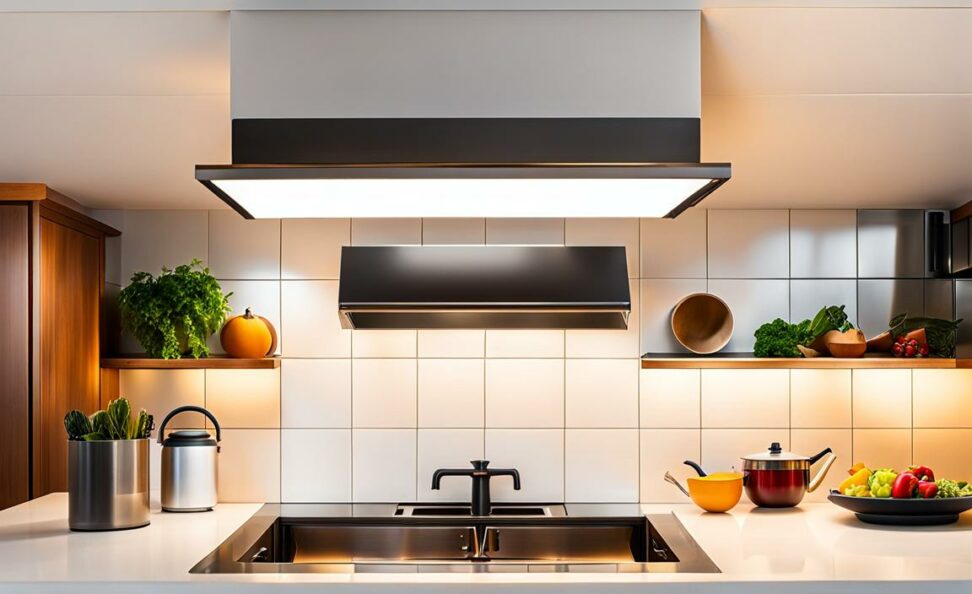Do-It-Yourself Guide to Boosting Kitchen Vent Effectiveness
Having an effective kitchen vent system is crucial for removing cooking pollutants like heat, grease, smoke, and odors from the air. But over time, many factors can reduce ventilation performance, leading to lingering smells and steam in the kitchen.
Read on to learn how to boost kitchen vent effectiveness with DIY solutions.

How Kitchen Vents Work
Before diving into troubleshooting techniques, let's review the inner workings of kitchen vent systems.
Vents use fans or blowers to actively pull air up through ductwork channels. As air passes through, mesh filters capture grease particles and other pollutants before exhausting the air outside.
Common Exhaust Vent Types
Range hoods mounted over the cooktop or stove are the most common. Downdraft vents are built into counters near the cooking surface. Over-the-range microwaves often include integrated vents. Central exhaust fans can also be installed in ceilings or walls.
Ventilation Science
Fans create negative air pressure to draw air into the vent system. CFM (cubic feet per minute) measures airflow efficiency. Duct routing, filters, bends and fan strength impact CFM.
Diagnosing Kitchen Ventilation Issues
Several common problems can reduce kitchen vent effectiveness:
Decreased Airflow
Clogged filters prevent airflow. Blocked or detached ductwork also restricts air movement. Weak fan motors may need replacement. Closed dampers block airflow.
Lingering Odors and Steam
Improper duct routing or termination points directed back inside can recirculate exhaust. Insufficient CFM ratings may not keep up with cooking needs.
Signs of Problems
Listen for excessive noise, rattling, or vibration, which could indicate obstructions. Check for kitchen haze, humidity, and stuffiness. Look for grease buildup on surfaces, which may show ventilation issues.
Improving Vent Performance
Here are DIY tips for optimizing kitchen vent effectiveness:
Deep Cleaning
Remove, wash, or replace grease filters. Clean accumulated grease from the fan housing. Clear dust buildup from blowers.
Ductwork Inspection
Check ducts for leaks, detachments, holes, and blockages. Repair joints with metal tape. Ensure ducts route directly outdoors.
Adjust Airflow
Open duct dampers fully. Remove obstructions from the duct path. Upgrade the fan if necessary to meet CFM requirements.
Proper Vent Use
Keep filters clean. Always run the vent during cooking. Allow the vent to run for 5+ minutes after cooking ends.
Maximizing Ventilation Efficiency
Make duct improvements and adjust kitchen layout for optimal vent performance:
Ducting Best Practices
Minimize duct turns and bends. Use smooth metal ducts instead of plastic flex ducts. Slope ducts downwards towards the exterior vent.
Outside Venting Tips
Install an exterior vent hood to protect the outlet. Point the vent away from doors, windows, and air intakes. Raise the vent above where snow or debris may accumulate.
Kitchen Setup
Optimize vent installation over the front burners. Avoid placing the vent near obstacles like cabinets. Allow sufficient countertop space for air capture.
With some DIY deep cleaning, upgrades, and adjustments, you can keep your kitchen vent working effectively. Proper ventilation is essential for removing air pollutants and odors during cooking.
Implementing best practices for ducting, vent placement, and usage habits will help maximize air flow. Diagnosing and fixing issues early on will also prevent costly repairs down the road.